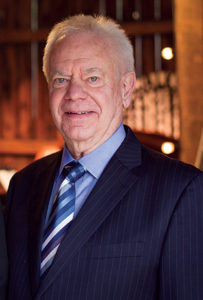 We have just finished four wonderful programs (15 performances in all), and most of the music has been from the German/Austrian tradition. While we included a splendid work by the Englishwoman, Alice Verne Bredt, and an under-appreciated masterpiece by Dvořák, the meat of these programs was music by Haydn, Mozart, Mendelssohn, Schumann, Beethoven, and Brahms. Pretty Teutonic, you might say. Well, that is about to change with an all-French, Bastille-celebration program coming up. But that has gotten me to thinking about how different countries have contributed to the various musical genres. Maybe it is because we are going to have wine pairings to sample with our French music. The wines will also be French of course. It is easy to think of France first when wine is the subject, but France is probably not the first country that is suggested by the idea of chamber music. Why is that?
We have just finished four wonderful programs (15 performances in all), and most of the music has been from the German/Austrian tradition. While we included a splendid work by the Englishwoman, Alice Verne Bredt, and an under-appreciated masterpiece by Dvořák, the meat of these programs was music by Haydn, Mozart, Mendelssohn, Schumann, Beethoven, and Brahms. Pretty Teutonic, you might say. Well, that is about to change with an all-French, Bastille-celebration program coming up. But that has gotten me to thinking about how different countries have contributed to the various musical genres. Maybe it is because we are going to have wine pairings to sample with our French music. The wines will also be French of course. It is easy to think of France first when wine is the subject, but France is probably not the first country that is suggested by the idea of chamber music. Why is that?
I think it has to do with the way music developed in different countries over the centuries. France, for a very long time, was rather consumed by music for the stage—ballet and opera. It started with the French court at Versailles in the 1700s. Composers like Jean Baptiste Lully set the stage (so to speak) with a variety of ballets and operas to suit his majesty’s tastes, and it started a trend. Following the fateful revolution with the storming of the Bastille on July 14, 1789, the thirst of the French for opera and ballet continued without the royalty. Even by the middle of the 19th century, Paris was still consumed by opera and ballet and had little or no time for symphonic music and certainly none for chamber music. What chamber music was performed was done so in very private home gatherings where little academies assembled to hear the music of one another or to perform for an elite intelligentsia. It was as though one might arrive wearing a mask and be asked for the secret chamber music password.
Little by little things began to change. Composers like Saint-Saëns and Franck began to gain traction with their chamber music, followed by Fauré, Chausson, and others. More importantly, their music began to take on a new French character. Heretofore, French instrumental music was heavily beholden to the German school. This was music heavily modelled after the German masters. However, little by little, French influences started to creep in leading to a full-scale rebellion. By the time we get to the works on our current program by Vincent d’Indy, Charles Bordes, and Claude Debussy, it is impossible to believe that any German could have been the author.
 One of the things they did was look back to older French composers and the dances that one would hear from Couperin and Rameau. Perhaps a rigaudon or a passepied would appear in a suite of dance movements. Textures became lighter and harmonies a bit more exotic. Instrumentation anomalies like d’Indy’s use of flute, harp, and strings on our program is unlike any German work from this period one could imagine. Bordes’ use of Basque folk music, even inspired by unique Basque folk instruments, is striking in its originality.
One of the things they did was look back to older French composers and the dances that one would hear from Couperin and Rameau. Perhaps a rigaudon or a passepied would appear in a suite of dance movements. Textures became lighter and harmonies a bit more exotic. Instrumentation anomalies like d’Indy’s use of flute, harp, and strings on our program is unlike any German work from this period one could imagine. Bordes’ use of Basque folk music, even inspired by unique Basque folk instruments, is striking in its originality.
Then comes Debussy. But even he started under the sway of German music. His opera, Pelléas et Mélisande, sounds, at times, as though it could have been penned by Wagner had he lived long enough. However, Debussy soon found a way to escape the German influence with his impressionistic style that changed everything. His String Quartet is a wonderful example of this emancipation. Nearing the turn of the century (19th to 20th), this work helps pave the way to an alternative path to the Teutonic, Second Viennese School and its rigorous mathematical approach led by Schoenberg, Berg, and Webern.
So, this program represents a new branch in the chamber musical family tree. Paris wakes up to the possibilities of something besides music for the stage and begins to support, slowly at first, symphonic and chamber music. In the process, the French begin to liberate themselves from German music and, in the process, create an alternative going forward for 20th century music that is based on historical influences, sound impressions, and fleeting images, rather than formal constructs and motivic derivations that are often discerned only after careful scrutiny of the score.
You can get a front-row seat to this sublime transformation and enjoy an expert sommelier’s wine pairing with each work on the program at three of our four presentations of this program. Sommelier, Jay Hutchinson, has chosen three special wines to present, one for each work, along with a detailed discussion of his choices. You may choose to participate in the tasting or simply enjoy his explanation of the appropriateness of each wine for the piece on the program. Concerts including the wine presentations are Thursday, July 11, at Kress Pavilion in Egg Harbor, 7:00 pm, Saturday, July 13, at Björklunden in Baileys Harbor, 7:00 pm, and Sunday, July 14 (Bastille Day), at Woodwalk Gallery, Egg Harbor, 5:00 pm. You can also enjoy the program without the wine pairings on Friday, June 13, at 7:00 pm at Sister Bay Moravian Church. Call (920) 854-7088 or visit www.midsummersmusic.com for more details or to purchase tickets.
Allons enfants
de la musique d’été,
Le jour de gloire
est arrivé!
